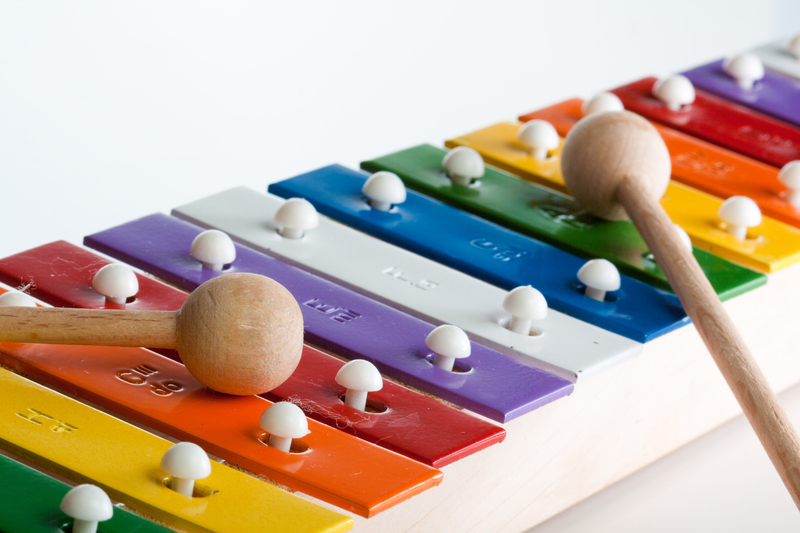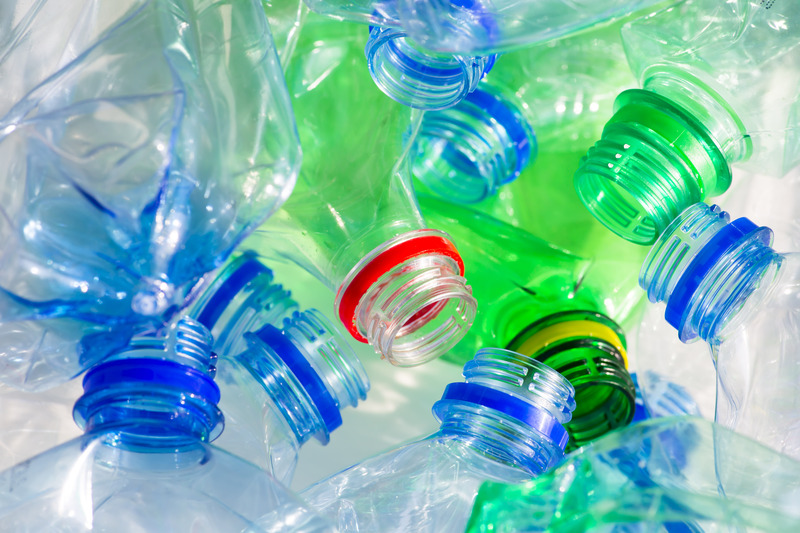Giving New Life to Your Old Pots and Pans
If you love cooking, chances are you have a collection of old pots and pans tucked away somewhere in your kitchen. Over time, these trusty companions may show signs of wear--scratches, stains, burnt bottoms, or faded non-stick coating. But before you toss them out, consider the endless possibilities for giving new life to your old cookware. In this comprehensive guide, we'll delve into creative, practical, and environmentally friendly ways to revitalize or repurpose your worn-out cookware, transforming yesterday's pans into tomorrow's treasures.
Why Revitalize Old Pots and Pans?
Old doesn't have to mean obsolete. Our pots and pans can often be brought back to life or used in innovative ways. Here's why revitalizing or repurposing cookware is a smart move:
- Eco-friendly: Upcycling reduces kitchen waste and limits landfill contributions.
- Cost-effective: Restoring or repurposing is often more affordable than replacing.
- Sentimental value: Heirloom cookware and family favorites become unique decorative pieces or valuable tools once again.
- Sustainability: Extending the lifespan of your pots and pans promotes responsible consumer habits.

Cleaning and Restoring Old Cookware: First Steps
Not all old cookware is beyond saving. Before you think of alternative uses, let's start with restoration. Here's how to breathe new life into well-used pots and pans:
Deep Cleaning Burnt and Stained Pots
Stubborn stains and burnt bottoms often make us think a pan is finished. However, with a little elbow grease and the right supplies, most cookware can be rejuvenated:
- Baking soda and vinegar: Sprinkle baking soda over the affected area, add a splash of vinegar, and let it fizz. Scrub with a non-abrasive sponge and rinse thoroughly.
- Salt and lemon: For copper or stainless steel, a paste of salt and lemon juice can remove tarnish and brighten the finish.
- Boiling water: Fill the pan with water, add a few tablespoons of baking soda, bring to a boil, and let it simmer for 10-15 minutes before scrubbing.
Restoring Cast Iron Cookware
Cast iron pots and pans are renowned for their durability, but they can rust or lose their seasoning. Restoring them is easier than you might think:
- Remove rust by scrubbing with steel wool or a brush.
- Wash thoroughly with hot water and dry completely to prevent new rust.
- Apply a thin layer of neutral oil (like vegetable or flaxseed) and bake upside-down in the oven at 375?F (190?C) for an hour to re-season.
Refreshing Non-Stick Surfaces
Non-stick pans that have minor scratches or lost their slickness can sometimes be restored:
- Clean gently with a mixture of baking soda and water to remove residue.
- Avoid using metal utensils to prevent future scratching.
- If the non-stick coating is flaking, it's best to retire the pan for food safety, but you can still reuse it for non-cooking purposes!
Creative Ways to Repurpose Old Pots and Pans
Sometimes, no amount of scrubbing can make that old pan food-safe. But that doesn't mean its journey is over! Below are imaginative and practical ways to transform your retired cookware.
Garden and Outdoor Uses
- Planters: Old pots and pans make quirky and unique planting containers for herbs, succulents, or small flowers. Just add drainage holes (using a drill or hammer and nail), fill with soil, and watch your garden flourish.
- Birdbaths or Feeders: Convert deeper pans into birdbaths or hanging feeders--just clean them thoroughly first and hang from a tree branch with sturdy twine.
- Garden Organizers: Shallow pans can hold gardening tools, seed packets, or even serve as trays for starting seedlings.
Decorating Your Home With Old Cookware
- Wall Art: Arrange old frying pans and saucepans on your kitchen wall for an artistic, rustic look. Paint them with bright colors or stencil on designs for a custom touch.
- Chalkboard Pans: Coat the inside of a pan with chalkboard paint to create a stylish kitchen memo board or menu display.
- Clock or Mirror Frames: Transform a pan into a retro clock or a unique mirror by fitting a mechanism or glass inside.
- Candle Holders: Fill an old sauce or frying pan with pillar candles for a charming table centerpiece.
Storage Solutions
- Desk Organizers: Smaller pots make ideal holders for pens, scissors, or office supplies.
- Tool Storage: Hang a row of pans in your workshop or garage to keep small tools and nuts organized.
- Bathroom Caddies: Use a pan or mini pot to keep cosmetics and toiletries within reach and add vintage charm to your bathroom.
Creative DIY Projects Using Old Pans
- Fairy Gardens: Create an enchanting miniature garden scene inside a pan for a fun craft or gift.
- Wind Chimes: Hang old lids and small pans together for a whimsical wind chime.
- Holiday Decorations: Paint and embellish pans to use as Christmas wreath bases or Easter baskets.
- Cupcake Stands: Stack various sized pans and glue them together for a tiered display stand.
Upcycling for the Kitchen--Beyond Cooking
- Compost Collector: A retired pot makes a handy compost scrap bucket in your kitchen until you transfer it to your outdoor pile.
- Salad Spinner Substitute: A colander placed inside a pot can serve as a makeshift salad spinner or produce washer.
- Pet Dishes: Clean, unused pots can double as durable food and water bowls for your pets.
Restoring and Resurfacing: Advanced Techniques
For those who wish to continue using their old cookware for cooking, some professional and DIY methods can restore safety and function.
Resurfacing Non-Stick Cookware
If you're not ready to say goodbye to a favorite non-stick pan, consider these approaches:
- Commercial spray recoating: Some companies specialize in recoating non-stick pans. Research reputable services in your area.
- DIY non-stick spray: While not a full solution, cooking with slightly more oil or using DIY pan release sprays can extend a pan's lifespan for certain uses.
Re-Tinning Copper Cookware
Copper pots with worn interiors may actually be more valuable after professional re-tinning:
- Find a specialist who can clean and reapply a safe tin layer inside.
- Re-tinned copper pans are almost as good as new, often lasting for years afterward.
Fixing Warped or Damaged Cookware
Warped pans can often be stabilized and saved for non-critical cooking tasks:
- Light warping: Place the pan on a flat surface and apply gentle pressure with a mallet covered in a towel to coax it back into shape.
- Heavy warping: Reserve for simmering, steaming, or decorative uses where a flat surface isn't critical.
Things to Avoid When Giving Old Cookware a New Purpose
- Never use severely damaged or flaking non-stick pans for food: Once the coating is compromised, they can release harmful chemicals.
- Avoid repurposing aluminum pots for food storage: Acidic foods can react with aluminum, causing off flavors and potential health risks.
- Don't use damaged pans for cooking on high heat: Warped or cracked pans may become unsafe when exposed to further stress.
The Environmental and Personal Impact of Upcycling Cookware
By finding new uses for your out-of-service kitchenware, you're not only reducing waste but also participating in a global movement toward sustainable living. Each pan or pot you save from the landfill makes a difference:
- Conserving resources: Fewer new pans produced means less mining, manufacturing, and shipping.
- Lowering household expenditures: Saving money by upcycling means more funds for other needs or hobbies.
- Adding creativity and personality: Unique decor and functional art elevate your home space and can become conversation starters.

Donation and Community Sharing: Giving Old Pans a Second Home
If you have more pans than you can repurpose, consider donating them to:
- Local shelters or soup kitchens (they often need cookware in any condition)
- Charity shops or thrift stores
- Community centers for art or gardening projects
- Friends or family starting out in their own kitchen
Conclusion: Reimagining the Possibilities for Old Pots and Pans
Giving new life to your old pots and pans is not just about saving money or reducing waste--it's about bringing creativity and resourcefulness into your daily life. Whether you're restoring a battered cast iron skillet, converting a scratched frying pan into wall art, or letting your garden bloom with upcycled planters, the possibilities for your old cookware are endless.
The next time you're tempted to throw away a worn-out pan, remember: with a little effort and imagination, you can transform the old into something useful, beautiful, and uniquely yours. Give new life to your old pots and pans--your home, your wallet, and the planet will thank you!